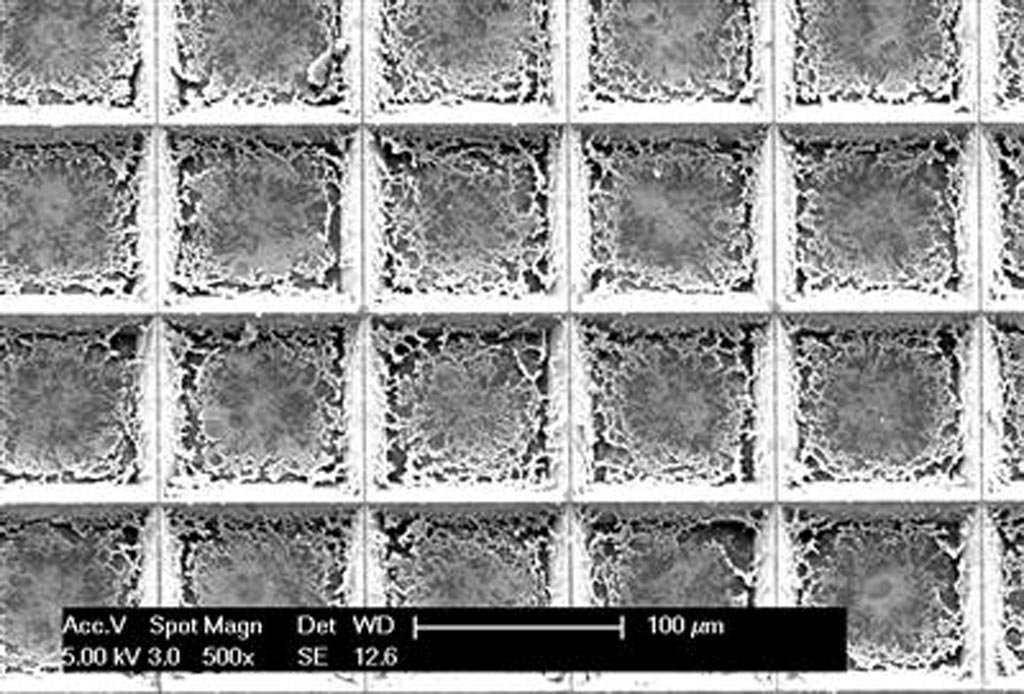Cancerous Tissue Analysis Introduced Using On-chip Technology
By LabMedica International staff writers
Posted on 29 Jan 2018
A novel gene expression analysis technique has been introduced that can accurately measure levels of RNA quickly and directly from a cancerous tissue sample while preserving the spatial information across the tissue.Posted on 29 Jan 2018
The new technique performs on-chip picoliter real-time reverse transcriptase loop mediated isothermal amplification (RT-LAMP) reactions on a histological tissue section without any analyte purification while preserving the native spatial location of the nucleic acid molecules.

Image: The pixelated spatial gene expression tool can analyze an entire tissue sample and identify cancer cells in a process that takes less than two hours (Photo courtesy of the University of Illinois).
LAMP is an isothermal nucleic acid amplification technique, which in contrast to polymerase chain reaction (PCR) technology in which the reaction is carried out with a series of alternating temperature steps or cycles, is carried out at a constant temperature and does not require a thermal cycler. In LAMP, the target sequence is amplified at a constant temperature of 60–65 degrees Celsius using either two or three sets of primers and a polymerase with high strand displacement activity in addition to a replication activity. An additional pair of "loop primers" can further accelerate the reaction. Due to the specific nature of the action of these primers, the amount of DNA produced in LAMP is considerably higher than PCR based amplification.
The new technique developed through collaboration between the University of Illinois (Champaign-Urbana, USA) and the Mayo Clinic (Rochester, MN, USA) is conducted on a fingernail-size silicon chip that contains an array of more than 5,000 pyramid-shaped wells with razor-sharp edges. When a centimeter-sized cancer tissue sample is placed on the chip it is automatically cut up into hundreds or thousands of tiny pieces (in a two minute process called “tissue pixelation”). This step is followed by tissue fixation (10 minutes), permeabilization (30 minutes), loading of wells with amplification reagents (two minutes), and finally on-chip picoliter RT-LAMP reaction on a hot plate (45 minutes).
The investigators demonstrated this method by amplifying TOP2A messenger RNA (mRNA) in a prostate cancer xenograft with 100-micron spatial resolution and by visualizing the variation in threshold time of amplification across the tissue. The on-chip reaction was validated by mRNA fluorescence in situ hybridization (mFISH) from cells in the tissue section. The entire process, from tissue loading on microchip to results from RT-LAMP could be carried out in less than two hours.
"Our approach pixelates the entire tissue sample and can identify those very few cells that may be cancerous," said senior author Dr. Rashid Bashir, professor of bioengineering at the University of Illinois. "There is not any technique in existence that takes raw tissue to nucleic acid amplification while keeping the spatial information preserved."
Details of the new technique were published in the January 15, 2018, online edition of the journal Nature Communications.
Related Links:
University of Illinois
Mayo Clinic







 assay.jpg)






